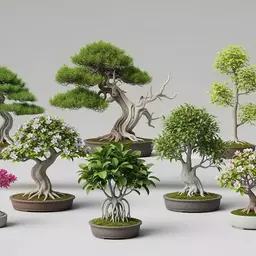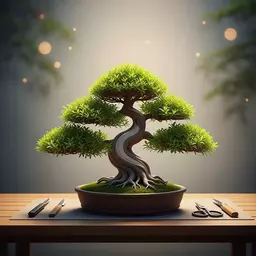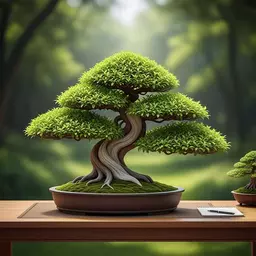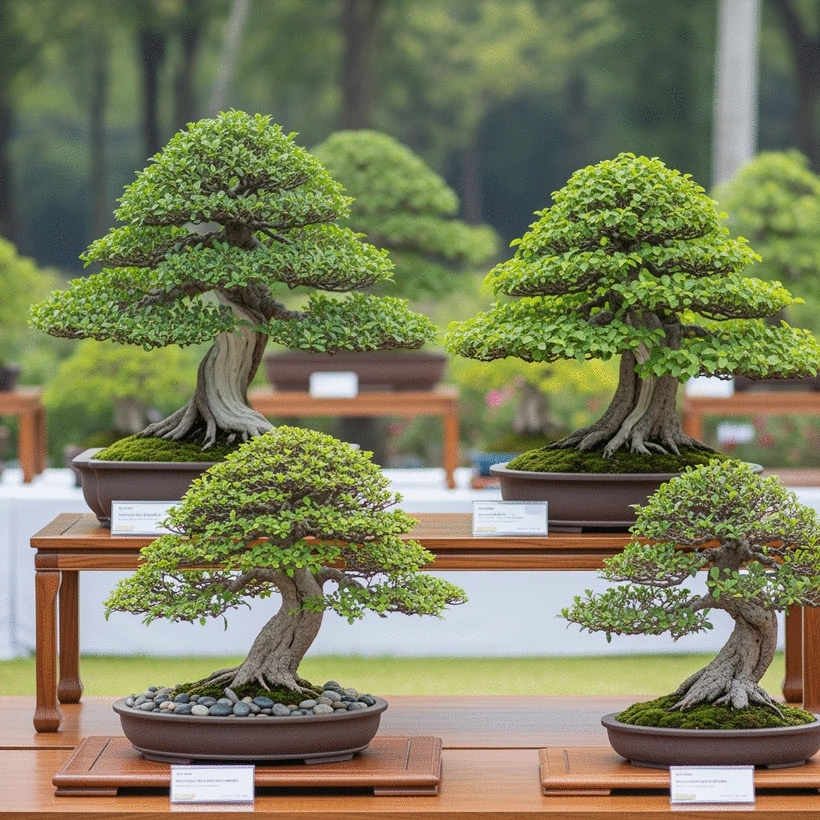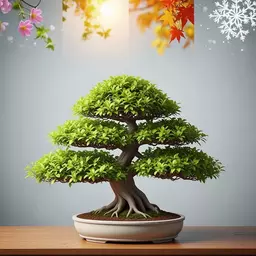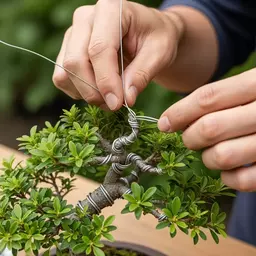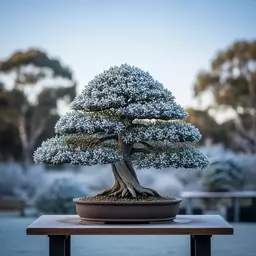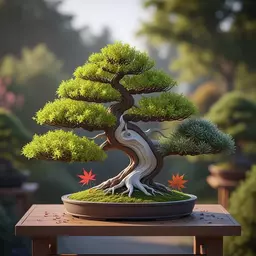Bonsai Trees for New Growers
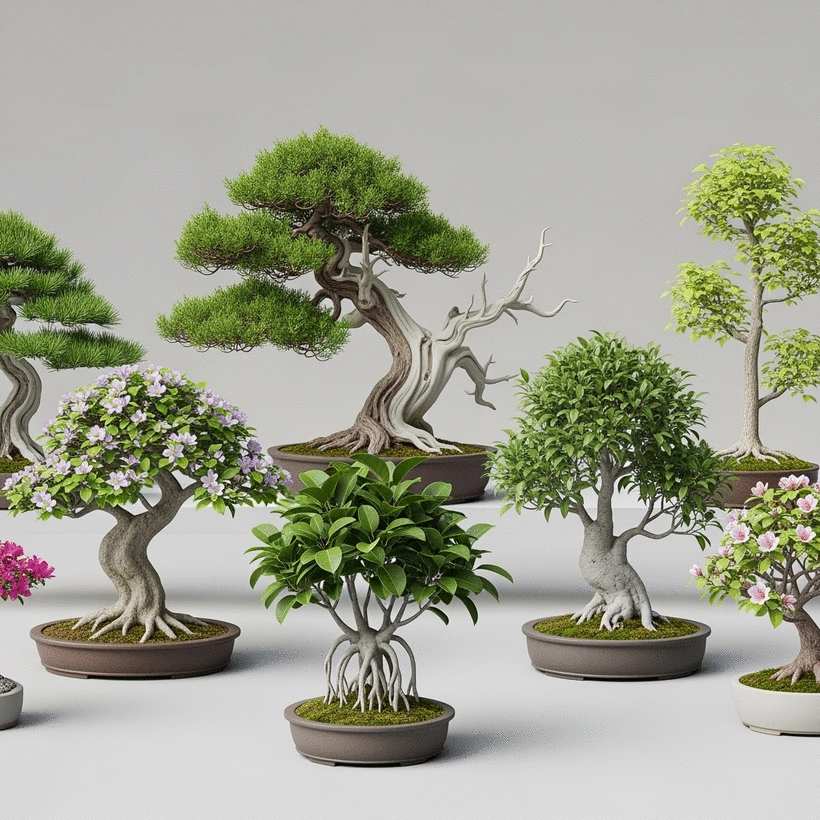
Have you ever pondered the art of cultivating your own miniature forest? Bonsai is more than just a hobby; it’s a beautiful expression of creativity and patience. As you begin this journey, let’s dive into the essential insights that will guide you in selecting and caring for your own bonsai tree.
What You Will Learn
- Bonsai cultivation promotes mindfulness and enhances your appreciation for nature.
- Choosing the right bonsai species is crucial; start with resilient trees like Ficus or Chinese Elm.
- Familiarity with popular bonsai varieties helps you select the best options for your environment.
- Advanced techniques such as grafting and advanced wiring can elevate your bonsai artistry.
- Incorporating eco-friendly practices, like organic fertilizers and water conservation, benefits both your bonsai and the environment.
- Using native species like Larch and Bald Cypress can enhance your bonsai collection's adaptability and aesthetics.
Bonsai Journey Milestones & Advanced Techniques
Embark on your bonsai journey with appropriate species, then explore advanced techniques and eco-friendly practices to cultivate your living art. For a comprehensive guide on getting started, consider reading our Bonsai Care: A Beginner's Guide.
Bonsai Species for Skill Levels
Advanced Bonsai Techniques
- Jin and Shari
- Grafting
- Advanced Wiring
- Root Over Rock
Eco-Friendly Practices
- Organic Fertilizers
- Water Conservation
- Natural Pest Control
- Recycled Materials
Benefits of Native Species
Understanding Bonsai: A Beginner's Guide to Selection and Care
Have you ever thought about the joy of nurturing a tiny tree? Bonsai cultivation is not just a hobby; it’s a delightful journey that connects us with nature and our own creativity. Here at Shire Bonsai, I believe that bonsai can be a wonderful experience for beginners, offering both a challenge and immense satisfaction as you watch your little masterpiece grow. Let’s explore what makes bonsai unique and how you can embark on this rewarding path!
One of the most captivating aspects of bonsai is its blend of artistry and horticulture. This living art form invites you to shape and style your tree, expressing your personality and vision. As a beginner, you’ll find that each tree tells a story, connecting you to ancient traditions and a community of passionate cultivators.
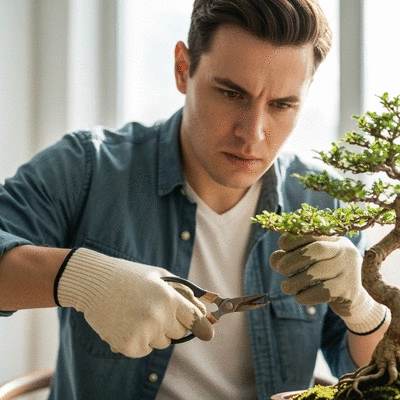
What Makes Bonsai a Unique Hobby for Beginners?
Bonsai is unlike any other gardening pursuit you might try. It combines patience, skill, and creativity, making it a truly fulfilling experience. Here are a few reasons why many find bonsai an appealing choice:
- Promotes mindfulness and relaxation
- Encourages a deeper appreciation for nature
- Offers endless opportunities for artistic expression
- Connects you with a supportive community of fellow bonsai enthusiasts
As you delve into this hobby, you’ll discover that each aspect—from pruning to wiring—can be a source of joy. Bonsai isn’t just about growing a tree; it's about nurturing a relationship with your plant. To learn more about specific techniques, check out our guide on Bonsai Wiring: A Simple Guide.
How to Choose the Right Bonsai Tree Species for Your Skill Level
Choosing your first bonsai tree can feel overwhelming, but it doesn't have to be! At Shire Bonsai, I usually recommend starting with species that are forgiving and easy to care for. Here are some options based on skill level:
- Beginners: Ficus and Chinese Elm are great choices due to their resilience.
- Intermediate: Junipers offer a bit more challenge with their styling.
- Advanced: Species like Japanese Maple require more dedication and knowledge.
Remember, the right choice will set the tone for your bonsai journey. Take your time to research and feel excited about the species you select!
Exploring Popular Bonsai Varieties: Why Ficus, Juniper, and Chinese Elm Stand Out
When it comes to popular bonsai species, Ficus, Juniper, and Chinese Elm often lead the pack. Each has its own unique attributes that make it a perfect candidate for beginners:
- Ficus: Known for its forgiving nature, Ficus is ideal for indoor environments and requires minimal care.
- Juniper: This outdoor favorite delights with its stunning foliage and offers an opportunity for creative styling.
- Chinese Elm: Its adaptability makes it suitable for both indoor and outdoor settings, perfect for a versatile collection.
By understanding these key varieties, you can start your bonsai adventure equipped with the knowledge to choose wisely. At Shire Bonsai, I’m here to guide you every step of the way!
Pro Tip
To truly enhance your bonsai cultivation experience, consider keeping a bonsai journal. Documenting your care routine, growth milestones, and any challenges you encounter will not only help you track your tree's progress but also deepen your connection to your bonsai. Over time, you’ll create a personal record of your journey, filled with insights and memories that will inspire your future endeavors!
Frequently Asked Questions About Bonsai
What is bonsai cultivation?
Bonsai cultivation is an art form that involves growing miniature trees in containers, combining horticulture with artistic expression. It promotes mindfulness and a deeper appreciation for nature.
Which bonsai species are recommended for beginners?
For beginners, resilient and forgiving species like Ficus and Chinese Elm are highly recommended due to their ease of care.
What are some advanced bonsai techniques?
Advanced techniques include Jin and Shari (creating weathered wood effects), grafting, advanced wiring for intricate shapes, and Root Over Rock styling.
How can I practice eco-friendly bonsai cultivation?
Eco-friendly practices include using organic fertilizers, conserving water by collecting rainwater, employing natural pest control methods like neem oil, and crafting pots or tools from recycled materials.
Why should I consider native species like Larch and Bald Cypress for my bonsai collection?
Native species like Larch and Bald Cypress are more resilient to local pests and diseases, often require less maintenance, and can provide a natural and organic aesthetic to your collection.
Taking Your Bonsai Journey to the Next Level
As you dive deeper into the enchanting world of bonsai, your journey doesn't have to stop at the basics. Advanced techniques can elevate your skills, allowing you to transform your bonsai trees into breathtaking masterpieces. Whether you are just starting or have a few years of experience, there’s always something new to learn and explore!
Let’s embark on an exciting adventure of crafting your bonsai skills with some innovative methods. These techniques not only enhance the beauty of your trees but also foster a deeper connection between you and your living art.
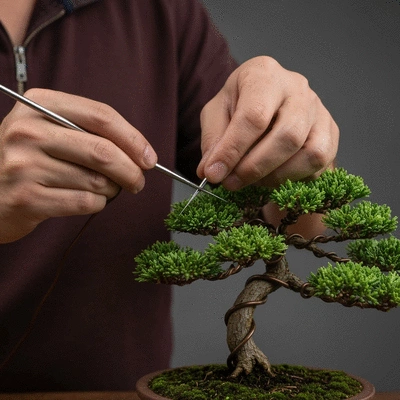
Exploring Advanced Techniques for Aspiring Bonsai Enthusiasts
Once you’re comfortable with basic care and styling, it’s time to delve into more complex techniques. Here are some advanced methods that I’ve found particularly rewarding:
- Jin and Shari: Create age and character by stripping bark and leaving branches to weather.
- Grafting: Combine different bonsai species for unique traits and aesthetics.
- Advanced Wiring: Manipulate branches into intricate shapes for artistic expression.
- Root Over Rock: An artistic technique that showcases roots growing over a rock, enhancing the natural look.
Each of these techniques not only enhances the visual appeal of your bonsai but also challenges you creatively. Don’t hesitate to experiment; after all, bonsai is about self-expression! For more detailed guidance on tools, visit our article on Bonsai Basics: Tools and Techniques.
Eco-Friendly Practices in Bonsai Cultivation
At Shire Bonsai, we believe in nurturing nature as we cultivate our bonsai trees. Incorporating eco-friendly practices into your bonsai care routine not only benefits the environment but also leads to healthier plants. Here are some sustainable practices you can adopt:
- Organic Fertilizers: Use natural fertilizers like compost to nourish your bonsai.
- Water Conservation: Collect rainwater for your bonsai care needs.
- Pest Control: Utilize natural methods such as neem oil instead of chemical pesticides.
- Recycled Materials: Craft pots and tools from reused items to minimize waste.
Implementing these practices not only aids your bonsai’s health but also contributes to a sustainable environment. It’s a beautiful way to honor the very nature that inspires our passion!
Incorporating Native Species: Benefits of Larch and Bald Cypress in Bonsai
Considering native species for your bonsai collection can bring unique benefits to your gardening experience. Two outstanding choices are the Larch and Bald Cypress, known for their charm and adaptability:
- Larch: This tree is a deciduous conifer that showcases stunning fall color and is easy to style.
- Bald Cypress: Thrives in wet conditions and offers a fantastic texture and appearance that can enhance any bonsai garden.
Native species often require less maintenance and are more resilient to local pests and diseases. They can also provide a more organic look to your collection, connecting your bonsai to the natural environment.
Final Thoughts on Starting Your Bonsai Collection
Embarking on your bonsai journey is a thrilling adventure filled with art, patience, and growth. As you explore advanced techniques, eco-friendly practices, and native species, remember that every tree you cultivate is a chapter in your unique story as a bonsai enthusiast.
At Shire Bonsai, I'm here to support you every step of the way. Let’s nurture our love for these beautiful trees together and inspire others on this delightful path! 🌳
Recap of Key Points
Here is a quick recap of the important points discussed in the article:
- Bonsai cultivation combines patience, skill, and creativity, making it a fulfilling hobby.
- Start with forgiving species such as Ficus and Chinese Elm for easier care.
- Explore advanced techniques like Jin and Shari, grafting, and advanced wiring to enhance your bonsai artistry.
- Incorporate eco-friendly practices such as using organic fertilizers and rainwater to promote sustainable bonsai care.
- Consider native species like Larch and Bald Cypress for resilience and natural beauty in your bonsai collection.
